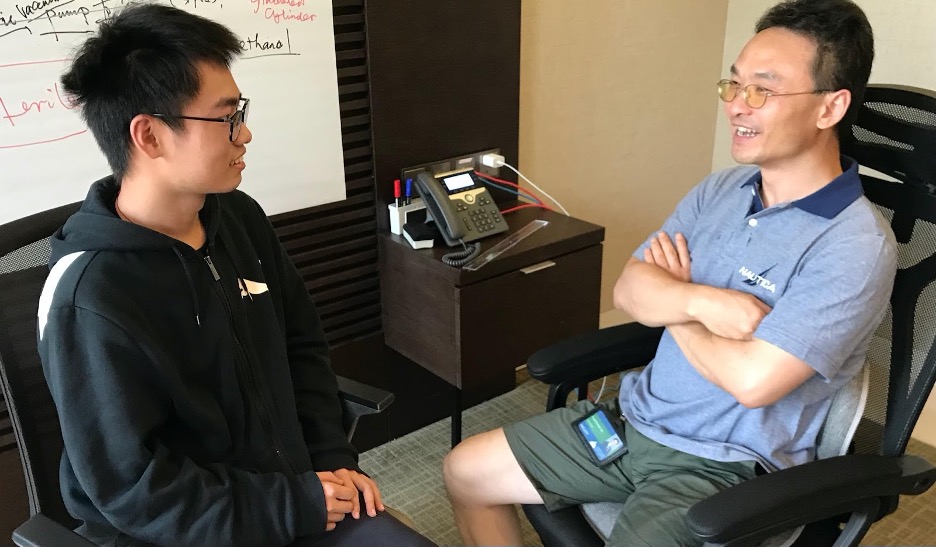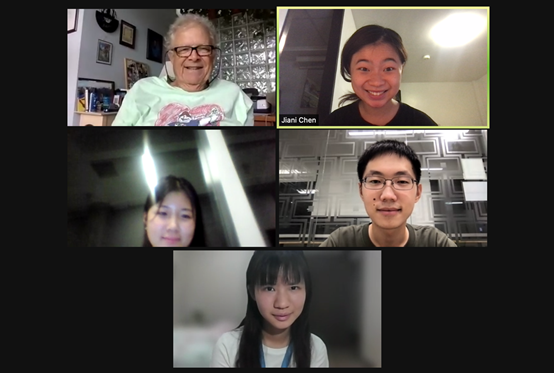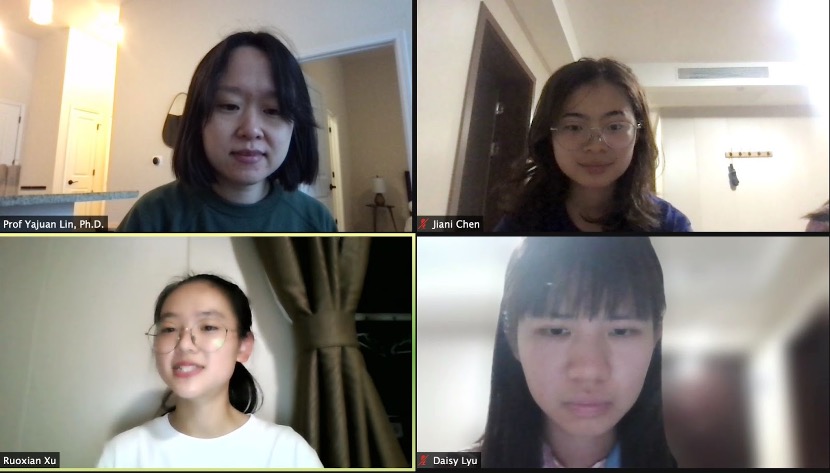Medihealth:
We arranged a collaboration with DKU Medihealth Podcast to publicize our findings and to inform the public of the dangerous algal blooms. One of the main objectives of this human practice collaboration project is to promote awareness of the algal bloom issue as a major environmental problem. Concerning the background of our project, the Medihealth Podcast directly helps with our ultimate goal, which is to concentrate more social and scientific power on the issue.
In the interview, our team members Yang Yu and Yunji Lee had a conversation about the detailed situation of algal blooms around the world and the story of our research. The interviewers, Haoyang and Yijia, also highlighted the obstacles that our team overcame in the process of research and production. Both the interviewers and interviewees discussed the future outlooks of this project, and expressed their hopes for more clean waters around the world.
Questionnarie
● Result 1: We collected 360 answers from 6 countries (China, Korea, US, UK, Vietnam, and Malaysia). About half (47%) of the interviewees have ever heard others complaining about algal bloom. ● Result 2: Since Taihu, one of the lakes suffered from severe algal bloom, is located in Jiangsu, we paid special attention to interviewees from Jiangsu province. From 348 effective responses, 34% of the interviewee from Jiangsu and 30% of the interviewee outside of Jiangsu claimed that they have experienced algal bloom. Though there is a 4 percent difference, together with result 1, we think this result shows that algal bloom is not a problem local to Jiangsu (Taihu). ● Result3: News is the most common way to get to know algal bloom. We suggest that other sources, especially social media, increase their explosion about algal bloom. ● Result4: Most recognizable feature of algal bloom is “lots of plants on water”. While more than half of the interviewees (64%) do not know algal bloom can cause death of fish and shrimps. This might be due to a lack of knowledge about algal toxin and respiration of cyanobacteria. ● Result 5: Comparing to those who do not receive an undergraduate degree, undergraduate and graduate have more understanding about algal bloom. ● Result 6: Those who have experienced algal bloom see much more urgency in controlling algal bloom than those who have no: About 15% of the latter hold that controlling it is not urgent, but only 6% of those who have experienced algal bloom chose this option. This shows that algal bloom is an impressible event. Visiting lakes suffered from algal bloom might be a method to raise people’s understanding about the imperative of algal bloom control. ● Result 7: Physical control is the most well-known way of algal bloom control. It is also considered the safest and most efficient. But in fact, physical control is not efficient enough to control algal bloom. From our interview with Prof. Zhang from Nanjing Institute of geography & limnology, we know that algal bloom will come back several weeks after salvage. In addition, about 1/5 of the participants claim that they have no idea about algal bloom control method. This demonstrates that algal bloom control needs more exposure and introduction to the public. ● Result8: About 86% of the participants agree that algal bloom should be long term precaution and control.
Integrated Human Practices:
Demonstrate how your team responded to your human practices reflections, research, and/or engagement. You should show how your activities impacted your project purpose, design, and/or execution. Integrated Human Practice: In the scientific design aspect, we enhanced our device with the consideration of the environmental impact and technological issues mentioned by many of our interviewees. In our first interview with Professor Lin, a significant advice was to use the 0.2μm filter in the process of our floating unit design. In our later design, this advice was put into action. Prof Cao suggested setting up a testing field for our experiments. According to this advice, to verify the algicidal effect of HPA3NT3-A2, microcystis aeruginosa was cultured in a tissue culture treated 24-well plate. Prof Zhang’s suggestions on OD testing and evaluation were fully applied to our research. Prof Paerl suggested that we should consider the relationship of algae and microorganism, and Prof Gu suggested we must carefully examine the recycle methods because even degradable material can cause excess nutrient in water. So, in our design, once the cyanoHABs are ended, we recycle the floating unit and release a substance to induce the cell death of modified bacteria, making sure that the whole process is environmentally friendly. To modify according to the consideration of Prof Gu, we designed the drug delivery system to be composed of small floating units made of biodegradable environmentally friendly plastic called polyhydroxyalkanoates (PHA) whose biodegradation in marine water and the freshwater system have been confirmed (Morohoshi et al., 2018; Sun et al., 2021). To respond to Professor Hans’s suggestions, we targeted the simple water body that does not involve complex nutrient cycle to facilitate our mathematical model for simulation, and learned about his algal bloom modeling, which we cooperated into our floating unit design. In the social influence and educational aspect, we recorded an episode of Duke Kunshan Medihealth Podcast with the DKU Medihealth podcast team. This is due to the consideration of the average knowledge level that was evaluated on our questionnaire. The podcast is now aired on many online platforms such as Spotify, Wechat official account, and Apple Podcast. The podcast is open access and is available to the whole society on the internet, promoting the broader society's engagement. We also communicated with DKU society through several campus showcases that were able to introduce our project to the DKU community.




